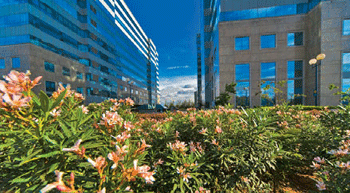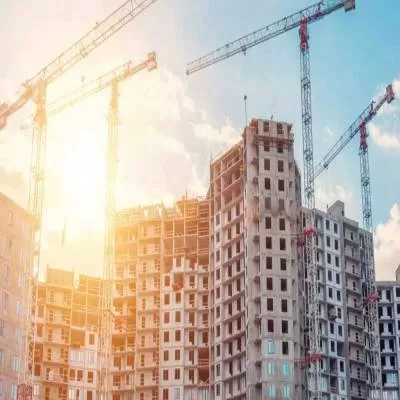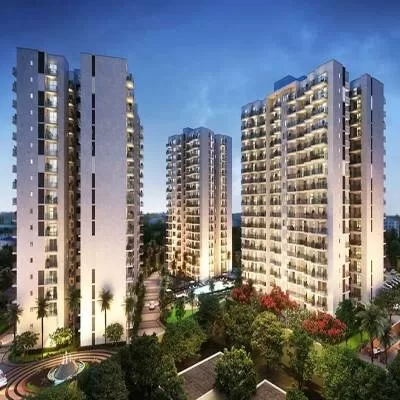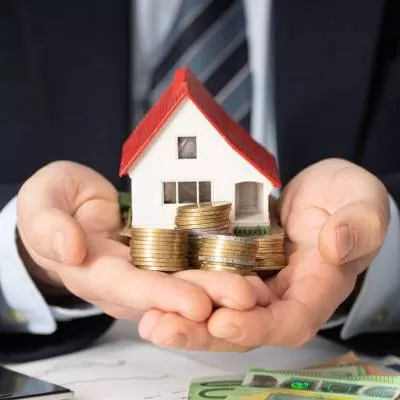- Home
- Real Estate
- The Green-Tech Way

The Green-Tech Way
With an investment of Rs 126 crore, the Aviator building at the 600,000-sq-ft International Tech Park Bengaluru (ITPB), built by Ascendas group, recently achieved LEED platinum rating from the Indian Green Building Council (IGBC) under the Core & Shell Category. ´The prime motive behind constructing a green building was to reduce the carbon footprint and preserve natural resources,´ says Lee Fu Nyap, CEO, Ascendas India Operations. The IT park comprising IT offices, SEZs, business centres, retail spaces, hotels and sporting arenas has been ensured continuous power supply from a 20-MW installed power plant.
Low heat, low energy
The east-facing building has a longer ´east-west´ fatade that ensures superior daylight. Moreover, the solar heat gain has been minimised by reducing the window-to-wall ratio to less than 30 per cent and installing energy-efficient glass. ´We have provided an energy- efficient chiller system along with a pumping system,´ shares Nyap. Moreover, wind power is the source of energy for the entire building; this helps consume 22 per cent less energy than conventional buildings. Also, fly-ash block walls along with energy-efficient glass (SHGC of 0.2) and a lighting system with Lighting Power Destiny (LPD) less than 0.8 w per sq ft ensure less energy consumption. Further, Visual DOE software has been used for building energy simulation and to understand the energy- efficiency of all the design features.
Airy interiors
The flow of fresh air inside the building is as per the American Society of Heating, Refrigerating and Air- Conditioning Engineers (ASHRAE) standards along with high-efficiency MERV13 air filters. Additional measures to ensure good indoor air quality for occupants include:
- Use of low-VOC (volatile organic compounds) paints, sealants and adhesives.
- Strict adherence to guidelines from the Sheet Metal and Air Conditioning National Contractors Association (SMACNA).
- CO2 sensors to provide fresh air, especially in densely occupied sections.
- Installation of 10-ft entry way mats to prevent dirt particles from entering the building.
We have installed a HVAC system with variable air volume for air distribution and Coefficient of Performance > 6.2. In addition, there are also CO2 level monitoring systems in the basement and variable frequency drives for AHUs, cooling towers and secondary pumps that ensure energy efficiency,´ adds Nyap.
Local raw materials
Thirteen per cent of the construction material used for the building has recycled content, for instance steel, cement, ready-mix concrete (RMC), aluminium, glass and fly-ash block. ´Forty-five per cent of the building materials procured during construction were either available locally or sourced from nearby locations,´ reveals Nyap. ´All these helped to substantially reduce the carbon footprint.´
Saving water
Cognisant of the need to conserve water, the building has been installed with water-efficient, low-flow water fixtures that help reduce potable water consumption by 88 per cent. Moreover, only STP-treated water is used for flushing and landscaping whereas reverse osmosis (RO) water is used for the cooling tower. ´Care has been taken to nurture native and adapted plants to reduce water usage along with drip and sprinklers for landscape irrigation around the park,ö informs Nyap. Challenges met
´The key challenge was to equip the building with water and energy conservation features,´ shares Nyap. ´The building design underwent various changes and energy modelling to achieve best alignment and orientation to save power and cooling capacity of equipment. Implementing these green ideas without increasing construction cost was also one of the challenges faced.´
Periodic maintenance
An in-house property management team has been trained to understand the design features and maintenance requirements of the project, with strict adherence to the ´operations and maintenance´ manual specifically prepared for the building. Periodic measurement and verification of electrical and water consumptions are monitored to optimise usage and reduce waste. Preventive maintenance of all the equipment and on-time repair and replacement are crucial to ensure proper functioning of all the green features. Moreover, a green consultant will monitor the building to ensure smooth operations of all the green features.
With plans to install solar PV to support onsite renewable energy requirements that will further increase the use of greener power, Ascendas aims to enhance and construct many more green buildings in the country.
Project details
Area: 600,000 sq ft
Completion: January 2014
Year of green certification: August 2014
Investments: Rs.126 crore
Architect/ HVAC consultant: Edifice Consultants Pvt Ltd.
Website: www.edifice.co.in
Structural Architect: Sterling.
Website: www.sterlingengg.com
Green consultant: LEAD Consultancy & Engineering Services (India) Pvt Ltd, Bengaluru.
Tel: 080-4298 0111.
Website: www.lcsind.org
Lights: Philips.
Tel: 022-6117 1000.
Website: www.philips.co.in
Paints: ASIAN and SKK
Website: www.asianpaints.com, www.skk.com
- Ascendas Group
- Investment
- Aviator building
- ITPB
- LEED platinum,IGBC
- Core
- Shell Category
- SHGC
- LPD
- Visual DOE software
- Nyap
- Eenergy
- ASHRAE
- MERV13 air filters
- SMACNA
- VOC
- AHU
- RMC
- Aluminium
- Glass
- Fly-ash block
- STP-treated water
- RO water
- Architect
- HVAC consultant
- Edifice Consultants Pvt Ltd
- Sterling
- LEAD Consultancy & Engineering Services (India) Pvt Ltd
- Philips
- ASIAN and SKK
- Paints
Company growth and eco-friendly initiatives go hand in hand for the flourishing Ascendas Group in India. With an investment of Rs 126 crore, the Aviator building at the 600,000-sq-ft International Tech Park Bengaluru (ITPB), built by Ascendas group, recently achieved LEED platinum rating from the Indian Green Building Council (IGBC) under the Core & Shell Category. ´The prime motive behind constructing a green building was to reduce the carbon footprint and preserve natural resources,´ says Lee Fu Nyap, CEO, Ascendas India Operations. The IT park comprising IT offices, SEZs, business centres, retail spaces, hotels and sporting arenas has been ensured continuous power supply from a 20-MW installed power plant. Low heat, low energy The east-facing building has a longer ´east-west´ fatade that ensures superior daylight. Moreover, the solar heat gain has been minimised by reducing the window-to-wall ratio to less than 30 per cent and installing energy-efficient glass. ´We have provided an energy- efficient chiller system along with a pumping system,´ shares Nyap. Moreover, wind power is the source of energy for the entire building; this helps consume 22 per cent less energy than conventional buildings. Also, fly-ash block walls along with energy-efficient glass (SHGC of 0.2) and a lighting system with Lighting Power Destiny (LPD) less than 0.8 w per sq ft ensure less energy consumption. Further, Visual DOE software has been used for building energy simulation and to understand the energy- efficiency of all the design features. Airy interiors The flow of fresh air inside the building is as per the American Society of Heating, Refrigerating and Air- Conditioning Engineers (ASHRAE) standards along with high-efficiency MERV13 air filters. Additional measures to ensure good indoor air quality for occupants include: Use of low-VOC (volatile organic compounds) paints, sealants and adhesives. Strict adherence to guidelines from the Sheet Metal and Air Conditioning National Contractors Association (SMACNA). CO2 sensors to provide fresh air, especially in densely occupied sections. Installation of 10-ft entry way mats to prevent dirt particles from entering the building. We have installed a HVAC system with variable air volume for air distribution and Coefficient of Performance > 6.2. In addition, there are also CO2 level monitoring systems in the basement and variable frequency drives for AHUs, cooling towers and secondary pumps that ensure energy efficiency,´ adds Nyap. Local raw materials Thirteen per cent of the construction material used for the building has recycled content, for instance steel, cement, ready-mix concrete (RMC), aluminium, glass and fly-ash block. ´Forty-five per cent of the building materials procured during construction were either available locally or sourced from nearby locations,´ reveals Nyap. ´All these helped to substantially reduce the carbon footprint.´ Saving water Cognisant of the need to conserve water, the building has been installed with water-efficient, low-flow water fixtures that help reduce potable water consumption by 88 per cent. Moreover, only STP-treated water is used for flushing and landscaping whereas reverse osmosis (RO) water is used for the cooling tower. ´Care has been taken to nurture native and adapted plants to reduce water usage along with drip and sprinklers for landscape irrigation around the park,ö informs Nyap. Challenges met ´The key challenge was to equip the building with water and energy conservation features,´ shares Nyap. ´The building design underwent various changes and energy modelling to achieve best alignment and orientation to save power and cooling capacity of equipment. Implementing these green ideas without increasing construction cost was also one of the challenges faced.´ Periodic maintenance An in-house property management team has been trained to understand the design features and maintenance requirements of the project, with strict adherence to the ´operations and maintenance´ manual specifically prepared for the building. Periodic measurement and verification of electrical and water consumptions are monitored to optimise usage and reduce waste. Preventive maintenance of all the equipment and on-time repair and replacement are crucial to ensure proper functioning of all the green features. Moreover, a green consultant will monitor the building to ensure smooth operations of all the green features. With plans to install solar PV to support onsite renewable energy requirements that will further increase the use of greener power, Ascendas aims to enhance and construct many more green buildings in the country. Project details Area: 600,000 sq ft Completion: January 2014 Year of green certification: August 2014 Investments: Rs.126 crore Architect/ HVAC consultant: Edifice Consultants Pvt Ltd. Website: www.edifice.co.in Structural Architect: Sterling. Website: www.sterlingengg.com Green consultant: LEAD Consultancy & Engineering Services (India) Pvt Ltd, Bengaluru. Tel: 080-4298 0111. Website: www.lcsind.org Lights: Philips. Tel: 022-6117 1000. Website: www.philips.co.in Paints: ASIAN and SKK Website: www.asianpaints.com, www.skk.com




















